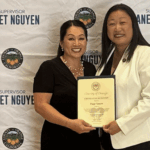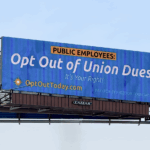Aug. 20 was “Employee Freedom Week,” and the nation certainly has much to celebrate this year on that score.
However, the injustice of forcing public employees to fund a private, ideological special interest group as a condition of serving the public is an embarrassing but undeniable blemish on U.S. history.
Consider that as recently as 1959 the very idea of collective bargaining for public employees was not only unthinkable, it was also illegal. It was clearly understood that public employees are not victims of exploiting capitalists, but are hired by the public itself. They perform responsibilities so important that citizens who refuse to pay for them are penalized severely.
The injustice public employees faced was the system of patronage, where an elected director of an agency would fire all public employees and replace them with friends and relatives. This injustice was blocked with reforms adopting “civil service” laws assuring continuing contracts and systematic pay schedules for public employees.
These kinds of laws have existed for more than 100 years, and were created for Washington public employees from the 1930s through the 1960s.
Not until 1967 was collective bargaining for public employees even possible in Washington. At that time, it was limited to various decisions unrelated to wages. The idea of negotiations including public budget obligations on wages was absurd. How could a private, self-interested group circumvent the elected policymaking process to establish budget priorities of the public agency?
As recently as 2002, the concept of adding collective bargaining over wages was adopted and added to the existing civil service laws for state employees. The first priority of the dues collection industry was to get paid, so forced fees were included in the first contracts.
2005 – An absurd injustice: “Employment Security” Department was required to fire employees.
Having departed from the injustice of firing public employees because of political patronage, the union enterprise instituted a new injustice—firing public employees for refusing to fund a private special interest group.
A recent conversation with an employee who was thrilled about the new Janus v. AFSCME decision illustrated the absurdity. She was employed by the agency created to assist with keeping people employed, the “Employment Security Department.” She hadn’t asked for the union to intervene in her work arrangement and had no interest in joining or paying for this small faction of agitators with its odd views and aggressive agenda.
She received a letter and then an email from her agency’s assistant commissioner notifying her she was to be fired along with 70 others for declining to fund the union.
A private special interest—allegedly dedicated to the cause of workers—had become so powerful that it can make the government agency responsible for employment security fire people for refusing to pay.
The woman did join, but has resented the injustice ever since. To her, the Janus v. AFSCME decision was the end to a brief but real era of oppression.
The court’s finding that important Constitutional rights were being trampled by the union’s scheme was very true.
She is now free to return to the employment arrangement she enjoyed up to 2005, and she no longer funds a voice she does not agree with.












